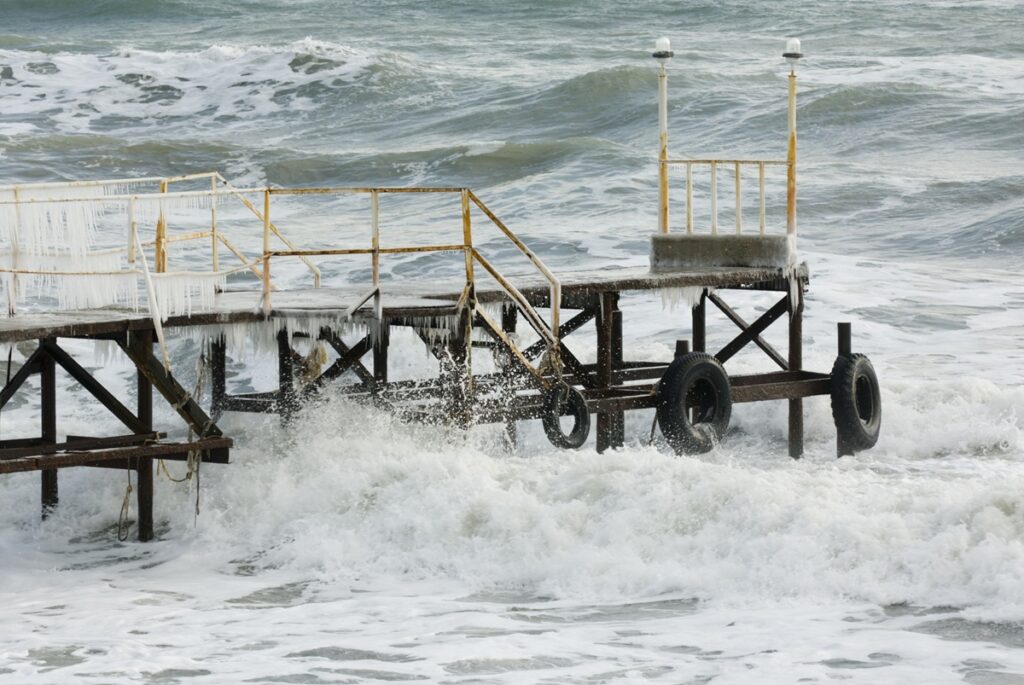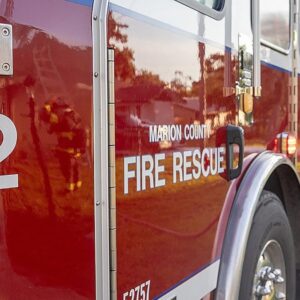A powerful Nor’easter swept up the U.S. East Coast on Sunday, causing heavy rain, high winds, coastal flooding, and travel delays across densely populated regions. Emergency services issued warnings as roads were washed out and storm surges threatened coastal communities.
In Delaware, officials activated the state National Guard as floodwaters rose, issuing a voluntary evacuation order for Bowers Beach near the Murderkill River. North Carolina’s Outer Banks faced ocean overwash along Highway 12 near Buxton, where several beachfront homes were threatened. “The waves are crashing really hard into the houses and the dunes, and it’s all eroding,” said local observer Robert Splawn.
Flooding extended down the coast to South Carolina. In Georgetown County, emergency crews rescued motorists trapped in rising waters after some areas received up to seven inches (18 centimeters) of rain. Charleston streets were closed as homeowners worked to pump water from flooded garages, while Myrtle Beach’s stormwater system was overwhelmed, prompting officials to urge residents to stay home.
New Jersey and New York Emergency Measures
New Jersey has been under a state of emergency since Saturday night, with emergency personnel authorized to respond as needed. New York Governor Kathy Hochul issued an emergency declaration for eight southern counties, warning of potential moderate to major coastal flooding, inland flash flooding, and wind gusts up to 60 mph (97 kph).
The National Weather Service placed New York City, Long Island, and southern Westchester County under coastal flood warnings and wind advisories. Coastal areas of Long Island could see flooding of up to three inches (8 centimeters), with high surf and beach erosion. Utilities have deployed more than 1,600 workers to respond to storm-related outages. Travel disruptions have affected airports from Washington, D.C., to Boston.

Alaska Faces Typhoon Halong Remnants
Meanwhile, western Alaska endured hurricane-force winds and catastrophic flooding from the remnants of Typhoon Halong. Entire homes were displaced in coastal villages, including Kipnuk and Kwigillingok, where up to 20 people were reported missing, according to Jeremy Zidek of the state Division of Homeland Security and Emergency Management.
More than 170 residents sought shelter in Kipnuk, where floodwaters rose 6.6 feet (2 meters) above the highest tide, sweeping away at least eight homes. Power lines and roadways were damaged across Yukon-Kuskokwim communities such as Bethel, Napaskiak, and Napakiak. Rescue aircraft were dispatched to assist affected residents in some of the most remote areas of the U.S., where many communities rely on boats, snowmobiles, or boardwalks for transport.
Oscar-Winning Actress Diane Keaton Dies at 79
Governor Mike Dunleavy promised immediate assistance: “Every effort will be made to help those hit by this storm. Help is on the way.”
Storm Outlook
Meteorologists warn that the Nor’easter’s greatest impact will be coastal flooding along the Eastern Seaboard, with rainfall extending from the Carolinas to New England. The storm is expected to move out by Monday night, leaving behind extensive cleanup and emergency response efforts.
Sources:
AP News






